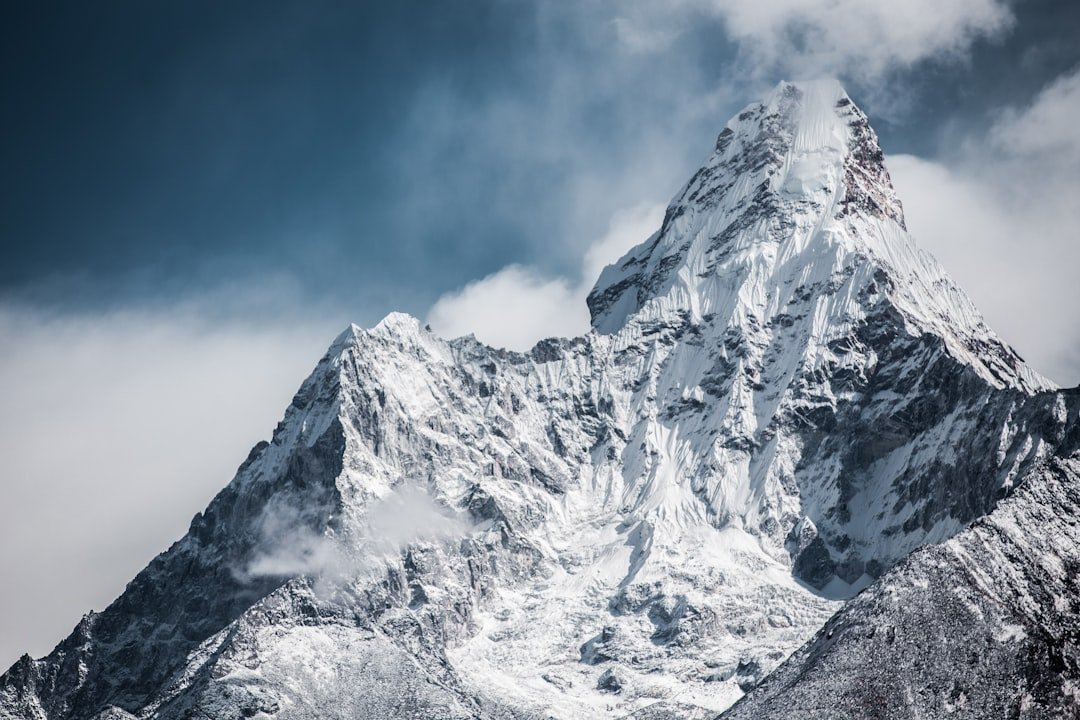Mount Everest, Nepal

Mount Everest rises above all, not just in height but in its reputation for danger. Each year, adventure seekers from every corner of the globe line up for a chance to stand on the world’s summit, even though the mountain has claimed more than 300 lives since 1953. Avalanches, crevasses, frostbite, and unpredictable weather make Everest one of the deadliest destinations. Yet in 2021, over 800 climbers reached the top, undeterred by the risks. What draws people is not just the view, but the idea of overcoming one of Earth’s ultimate challenges. The Everest base camp trek alone sees thousands more, with people willing to face altitude sickness and harsh conditions just to get a glimpse of the peak. Everest’s pull seems almost magnetic, proving that danger can be just as enticing as beauty.
Death Valley, California, USA

Death Valley isn’t just a name—it’s a warning. This stretch of desert is infamous for its scorching temperatures, which in 2020 peaked at a blistering 130°F (54°C), one of the hottest ever recorded on Earth. Despite this, over a million people visited in 2022, eager to witness its salt flats, canyons, and otherworldly landscapes. Heatstroke and dehydration are real threats here, with park rangers regularly rescuing stranded or ill visitors. Signs advise against hiking after 10 a.m. during summer, but the temptation of Badwater Basin, Zabriskie Point, and the Mesquite Flat Sand Dunes lures many into risky situations. For some, braving Death Valley’s extreme environment is a badge of honor, a testament to human resilience and curiosity.
The Amazon Rainforest, South America

The Amazon is the world’s largest rainforest and perhaps its wildest. Tourists flock here for a glimpse of jaguars, pink river dolphins, and parrots, but lurking danger is never far. The region is home to venomous snakes, aggressive insects, and diseases like malaria and yellow fever. Despite these hazards, eco-tourism is booming, with about 2 million people visiting annually. Many are drawn by the promise of seeing untouched nature and learning from indigenous communities. Guided tours are the norm, as venturing solo can be fatal. The Amazon’s mystique and the promise of adventure continue to outweigh worries over safety for those hungry for an authentic jungle experience.
The Great Blue Hole, Belize

The Great Blue Hole, a massive underwater sinkhole, is a dream come true for experienced divers. Its deep blue waters are mesmerizing, but strong currents and sudden weather changes make diving here dangerous. In 2020, more than 10,000 divers took the plunge, hoping to glimpse ancient stalactites and rare marine life. The site’s depth and isolation mean accidents can quickly turn deadly, especially for the unprepared. Despite warnings and the need for advanced certification, divers keep coming, drawn by the thrill of descending into the unknown. The Blue Hole stands as a test of both skill and nerve, with its dangers adding to its legendary status.
Chernobyl, Ukraine

Chernobyl, the site of the world’s worst nuclear accident, is now a magnet for dark tourism. Even with lingering radiation hotspots, more than 100,000 visitors explored the exclusion zone in 2019. Guided tours try to keep guests safe with Geiger counters and strict routes, but the invisible threat of radiation adds an eerie tension. The abandoned town of Pripyat, with its crumbling buildings and overgrown playgrounds, has become an icon of disaster tourism. People are drawn by curiosity, the desire to witness history, and the surreal atmosphere. Chernobyl’s tragic past and haunting present make it an unsettling yet irresistible destination.
The Cliffs of Moher, Ireland

Ireland’s Cliffs of Moher are awe-inspiring—and treacherous. Rising up to 700 feet above the Atlantic, these sheer cliffs attract about 1.5 million visitors a year. The wind can whip up suddenly, and a single misstep near the edge can be fatal. Despite safety barriers and warning signs, people still risk their lives for dramatic selfies or a better view. The cliffs are often shrouded in mist, making paths slippery and visibility poor. Yet the dramatic seascapes and the sense of standing at the edge of the world keep visitors coming back, year after year. The mix of danger and beauty is simply irresistible.
The Devil’s Pool, Victoria Falls

On the very rim of Victoria Falls, one of the world’s largest waterfalls, lies the Devil’s Pool—a natural infinity pool that tempts thrill-seekers. Every year, thousands take the plunge during the dry season when the water level is low enough to reveal the pool. But the currents are still strong, and one wrong move could mean being swept over the 355-foot drop. Guides keep a close watch, but accidents have happened. The thrill of looking over the edge of the falls, with the thundering water just inches away, is what brings people back. For many, it’s the ultimate adrenaline rush.
The Dead Sea, Israel/Jordan

The Dead Sea is famous for its salt, and floating in its dense waters is an experience like no other. Millions visit every year for its unique buoyancy and supposed healing properties, but there are hidden dangers. The extreme salinity can cause painful skin irritation and even chemical burns. Swallowing the water can be life-threatening, and dehydration is a constant risk due to the intense heat. Despite these hazards, tourists flock to its shores for mud baths and mineral spas, hoping for health benefits and unforgettable photos. The Dead Sea’s reputation as a natural wonder keeps people coming, regardless of the risks.
The Sahara Desert, Africa

The Sahara’s vastness is both its draw and its danger. Covering much of North Africa, it’s the largest hot desert on the planet. Temperatures regularly soar above 120°F (49°C), and sandstorms can strike without warning. Every year, thousands of tourists embark on camel treks, dune-bashing tours, and stargazing trips. The risks of dehydration, sunstroke, and getting lost are ever-present. Tour guides emphasize preparation and strict adherence to survival protocols, but the desert’s harsh beauty is a siren song for adventurers. The Sahara represents the ultimate test of endurance and spirit.
The Blue Hole, Dahab, Egypt

Known as the “Diver’s Cemetery,” the Blue Hole in Dahab is one of the world’s most infamous dive sites. It’s stunningly beautiful, with clear blue waters and coral walls, but its deceptive depths have claimed the lives of more than 200 divers. The site attracts both seasoned professionals and overconfident novices, with thousands visiting each year. The underwater archway, located more than 50 meters deep, is a notorious challenge. Strong currents, nitrogen narcosis, and disorientation are real dangers. Yet the very reputation that makes it feared also makes it famous. Divers continue to test their skills here, chasing glory or simply the rush of the deep.
Kawah Ijen Volcano, Indonesia

Kawah Ijen is famous for its electric-blue flames, caused by burning sulfur, and its beautiful turquoise crater lake. But visiting this volcano is a risk few would imagine. The air here is thick with toxic sulfur fumes that can cause severe respiratory issues. Visitors must wear gas masks to explore the crater, and the steep, rocky paths add another layer of danger. Still, thousands come each year, drawn by the surreal nighttime spectacle and the chance to meet the miners who brave the fumes daily. The combination of beauty and danger makes Kawah Ijen a truly unforgettable, if hazardous, destination.
Bungee Jumping at Victoria Falls Bridge, Zambia/Zimbabwe

Leaping off the Victoria Falls Bridge is not for the faint-hearted. The jump drops thrill-seekers 111 meters toward the Zambezi River below, with only a bungee cord to save them. Despite safety checks, incidents have occurred—most famously in 2012, when a cord snapped and a tourist survived a plunge into the river. The fear factor only seems to increase the attraction, with thousands lining up each year for the ultimate adrenaline rush. The roar of the falls and the breathtaking view make this one of the world’s most sought-after jumps, danger and all.
Komodo Island, Indonesia

Komodo Island is home to the world’s largest lizards—the Komodo dragons. These prehistoric predators can grow over 10 feet long and have a venomous bite. Still, more than 170,000 tourists visited the island in 2023, eager to see these creatures in their natural habitat. Rangers accompany visitors to minimize risks, but aggressive dragons have attacked humans before. The thrill of walking among giants is a major draw, and the island’s rugged beauty adds to the appeal. For those who dare, Komodo offers a raw, primal adventure not found anywhere else.
Angel’s Landing, Zion National Park, USA

Angel’s Landing is a hiking trail that lives up to its name—with breathtaking views and a terrifyingly narrow summit ridge. The final section requires hikers to grip chains as they navigate sheer drop-offs on both sides. Since 2000, at least 17 people have died on this trail, but that hasn’t stopped crowds from coming. In 2023, Zion National Park introduced a permit system to control the number of hikers and reduce accidents. Despite the risks, the sense of accomplishment and the panoramic views from the top keep thrill-seekers coming back. Angel’s Landing remains a rite of passage for hikers looking for a challenge.
Plitvice Lakes National Park, Croatia

Plitvice Lakes is a stunning network of turquoise lakes and cascading waterfalls, attracting over 1.7 million visitors annually. But its beauty hides real danger. Slippery walkways, sudden changes in weather, and occasional flash floods have led to injuries and even fatalities. The park’s popularity means crowded paths, making slips and falls more likely. Rangers and staff work hard to maintain safety, but the temptation to step off the designated tracks for a better photo is strong. The magic of Plitvice’s landscapes, combined with the risk, creates an atmosphere of both wonder and caution.
Pamukkale Thermal Pools, Turkey

Pamukkale’s dazzling white terraces are formed by mineral-rich hot springs, creating a surreal, otherworldly landscape. Every year, more than 2 million tourists bathe in its warm waters, but the slippery travertine can cause falls and injuries. Despite restrictions to protect the fragile site, crowds often disregard warnings, increasing both personal risk and environmental damage. The healing reputation of the pools, along with their Instagram-worthy appearance, keeps people coming. Pamukkale’s blend of natural beauty and subtle danger makes it one of the world’s most alluring—and risky—tourist hotspots.








